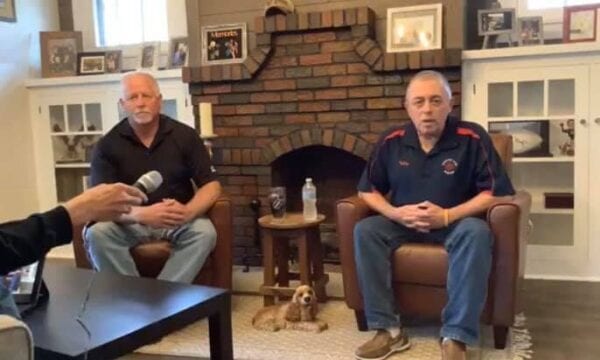Pete Chacalos was always prepared for his classes during his 35 years in public education.
Lesson plans, scheduled tests, and the occasional pop quiz were all parts of the science classes the veteran educator taught at Wheeling Park High School. And yes, there were beakers and test tubes and stuff like that during his days, but when Chacalos approves purchases these days for science-class equipment, he becomes very, very jealous.
Chacalos is one of five members of the Ohio County Board of Education that review and vote on budgetary items such as equipment, so he’s very aware of the differences between now and then. When he began his teaching career in the 1980s, textbooks and notebooks were staples, but that all started changing in the 1990s.
“And it’s not really stopped since. The internet and what it offers probably has been the biggest factor of anything that comes along,” Chacalos said. “For the majority of the years I was a teacher at Wheeling Park, the kids didn’t even have Chromebooks with programs like Schoology on them. Instead, we used a lot of chalkboards and notebooks, and toward the end of my teaching career, smartboards.
“These days the tests and the quizzes are all online and that allows the grades to go directly to a teacher’s grade book instead of the teacher having to record everything manually. That saves a ton of time, and that’s a very good thing because our teachers do much, much more than what the students see and what the parents think,” he said. “Plus, snow days are different these days because now the students can just go online to do what they need to do from home.”

Hardware, Software, Know-How
Before Wi-Fi, Wheeling Park High was hardwired for computer labs. The multi-colored wires ran above the dropped ceilings and down concrete walls to connect with what was known as the World Wide Web. By the time Chacalos retired a few years ago, though, the internet had been in every person’s pocket for about a decade.
“I did some things online for my students, but it’s much different now because of how quickly the technology changes,” he explained. “I’m curious to see where we’ll be in five and 10 years, but I do wish I had what they have today, that’s for sure.”
Dr. Kim Miller, superintendent of Ohio County Schools, has repeated an untold amount of times that she firmly believe in-person instruction is an absolute must when it comes to K-12 education.
Chacalos completely agrees.
“I think that was the number one lesson everyone learned from the pandemic. Some kids did do well, sure, but I think most of the students fell behind because the virtual platforms didn’t work for them,” he said. “But I also believe our teachers and administrators learned when everyone was home how to use the internet more in their in-person classes.
“The children need to be in the classrooms because they need that personal contact with their teachers. I would have never come to know my students if all I did was see them on a screen. That one-on-one time is crucial to education on the high school level,” Chacalos insisted. “The biggest thing I think the technology has given to our teachers is more teaching time and that’s a very good thing for our students in Ohio County Schools.”


